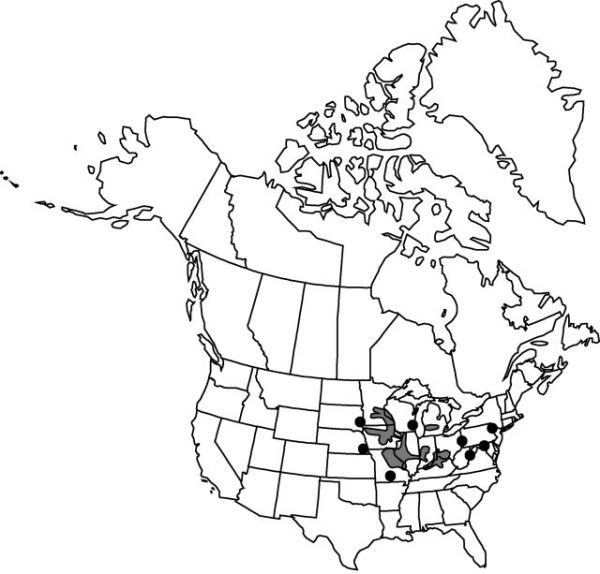Difference between revisions of "Trillium nivale"
Syn. Fl. West. States, 93. 1835.
FNA>Volume Importer |
imported>Volume Importer |
||
| Line 8: | Line 8: | ||
}} | }} | ||
|common_names=Snow trillium;dwarf white trillium | |common_names=Snow trillium;dwarf white trillium | ||
| + | |special_status={{Treatment/ID/Special_status | ||
| + | |code=E | ||
| + | |label=Endemic | ||
| + | }} | ||
|basionyms= | |basionyms= | ||
|synonyms= | |synonyms= | ||
| Line 46: | Line 50: | ||
|publication title=Syn. Fl. West. States, | |publication title=Syn. Fl. West. States, | ||
|publication year=1835 | |publication year=1835 | ||
| − | |special status= | + | |special status=Endemic |
| − | |source xml=https:// | + | |source xml=https://bibilujan@bitbucket.org/aafc-mbb/fna-data-curation.git/src/bb6b7e3a7de7d3b7888a1ad48c7fd8f5c722d8d6/coarse_grained_fna_xml/V26/V26_104.xml |
|genus=Trillium | |genus=Trillium | ||
|subgenus=Trillium subg. Trillium | |subgenus=Trillium subg. Trillium | ||
Revision as of 22:12, 27 May 2020
Rhizomes short, praemorse. Scapes usually 1, 6-gonal in cross section, 0.3–0.5 dm at onset of anthesis, expanding to 0.45–0.8 dm, slender, glabrous. Bracts distinctly petiolate; blade bluish green, elliptic-ovate to ovate, 1.5–4.5 cm × 0.7–34 mm, base abruptly rounded to petiole, apex round-obtuse. Flower erect, fragrance sweet; sepals spreading, flat, bluish green, lanceolate, 10–32 × 2–7 mm, shorter than petals, margins entire, apex obtuse; petals very showy, recurved to erect-spreading, white, veins not engraved on adaxial surface, ovate-elliptic to oblong, 1.5–3.5+ × 0.8–1.5 cm, thin- to firm-textured, margins entire to slightly wavy, apex obtuse-acuminate; stamens straight, 5–18 mm; filaments white, slightly shorter than anthers, slender; anthers straight, pale yellow, 2.5–11 mm, thin, dehiscence introrse; ovary greenish white, ± globular, obtusely 3-angled; style with tips spreading, elongate, 0.5–1.5 mm, slender; stigmas prominent, recurved or curled, connate basally, white, linear, threadlike, 4–12+ mm; pedicel erect in anthesis, rapidly recurving below leaves after pollination, 5–20 cm. Fruits greenish white, odorless, globose-ovate, 0.6–1 × 0.5–0.8 cm, pulpy, not juicy. 2n = 10.
Phenology: Flowering spring (early Mar–early Apr).
Habitat: Forested, limestone-derived soils, alkaline glacial drift or loess, creeping soils at head of ledges, talus of cliff bases, crevices in limestone cliffs, gravelly deposits on higher floodplain riverbanks
Elevation: 100–300 m
Distribution

Ill., Ind., Iowa, Ky., Md., Mich., Minn., Mo., Nebr., Ohio, Pa., S.Dak., W.Va., Wis.
Discussion
Trillium nivale occurs primarily at the southern edge of Pleistocene glaciation and shuns humus, leaf deposits, and much plant competition.
Selected References
None.